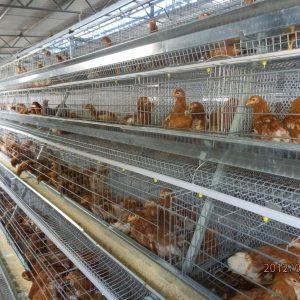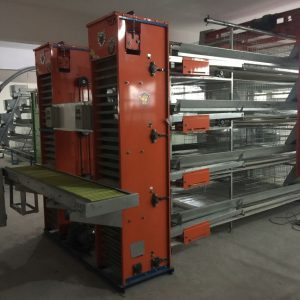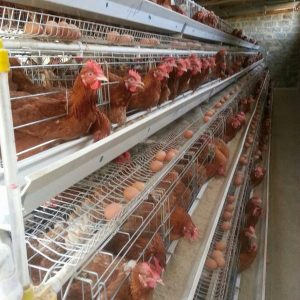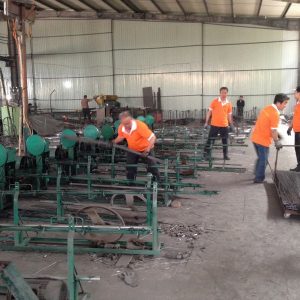
The key technology of chick feeding
Brooding is the key to raising chickens. The quality of chicken feeding and management is a key link in the production of chickens. It not only affects the growth and survival rate of chickens, but also affects production performance and economic benefits. Therefore, it must be targeted at chickens. Take corresponding measures to improve the breeding and management of the chicks to improve the survival rate of the chicks and better improve the production performance of the chicks.
1. Preparations before brooding
1.1 The maintenance of the brooding house and the preparation and disinfection of brooding equipment: 1 week before the arrival of the chicks, the brooding house should be repaired and the brooding equipment should be prepared: pans, feeding troughs, drinking fountains, etc., and thoroughly cleaned together, and then used Malin and potassium permanganate are fumigated and disinfected for 24 hours (the ratio of 15g potassium permanganate to 30ml formalin per cubic meter of space is appropriate), and finally disinfectants such as Baidusha are used for thorough disinfection.
1.2 Preparation of feed, medicines and vaccines: Before brooding, prepare chicken feeds of different ages with complete nutrition, easy digestion and good palatability, common brooding drugs (such as norfloxacin, etc.) and disinfectants (such as Baidusha, etc.) ) And all vaccines involved in the epidemic prevention program (such as Marek’s disease vaccine, etc.).
1.3 Preheating the brooding house: 1 to 3 days before entering the chicks (generally 1 day in summer, 2 days in spring, and 3 days in winter) the chicken house starts to heat up and preheat, so that the indoor temperature reaches about 32℃. During the temperature test, in order to avoid contamination of the disinfected houses and appliances, strictly follow the sanitation and epidemic prevention requirements.
2. Guarantee the quality of incoming chicks
The quality of chicks is directly related to the growth and development, survival rate and production performance of the chickens, and affects the feeding effect. Therefore, when entering the chicks, we must strictly control the quality, try to choose healthy chicks, and eliminate weak or defective chicks as soon as possible.
3. Create an environment suitable for the growth of chicks
3.1 Temperature: The function of the chick to regulate body temperature is not perfect, the ability to adapt to the external environment is poor, the disease resistance is weak, the immune function is poor, easy to contract diseases, and sensitive to temperature changes. A suitable temperature is the first condition for good chicks and must be strictly controlled. The temperature is too high, low or too much change, which is not conducive to the growth and development of the chicks. Whether the brooding temperature is appropriate or not can be judged by the state of the chicks. The temperature is appropriate, the chicks are lively and active, the cry is brisk, the drinking water is moderate, the head is stretched and the legs are relaxed when sleeping, not squeezed, nor dispersed; the temperature is low, the chicks gather Around the heat source, crowded and crowded, seldom went to eat, and kept crying; the temperature was too high, the chicks kept away from the heat source, opened their mouths and raised their heads, irritable, and drinking water increased significantly.
3.2 Humidity: Humidity has a great influence on the growth and development of chicks, especially for chicks around 1 week old. If the humidity is too low, the chicks will lose water and cause malabsorption of the yolk; if the humidity is too high, the chicks will lose their appetite, and they are prone to diarrhea and even death. Practice has proved that the relative humidity in the early brooding period is higher than that in the late brooding period, mainly because the indoor temperature in the early brooding period is higher and the water evaporates quickly. At this time, the relative humidity should be higher. Under normal circumstances, in the early stages of brooding, there is often too little humidity, which causes the chicks to drink frequently, the legs are dry and the fluff is brittle. At this time, the best measure to take is to bring the chickens to spray disinfection or place more water trays to increase the humidity, and gradually reduce the humidity as the chicks grow.
3.3 Light: Appropriate light can promote the feeding, drinking and exercise of the chicks, which is beneficial to the growth and development of the chicks, and achieves the purpose of rapid weight gain. In production practice, natural light is generally combined with incandescent lamp light supply. The principle of controlling the light supply of incandescent lamp is: best 24 hours light for the first 3 days, 15 hours light from the 3rd day to 2 weeks of age, and every week thereafter Decrease by 2 hours and gradually transition to natural light, and use natural light after 4 weeks to prevent excessively active chickens from pecking.
3.4 Ventilation: Ventilation is to remove the dirty air in the house, especially the toxic and harmful gases such as carbon dioxide, ammonia and hydrogen sulfide. Good ventilation can keep the air in the brooding room fresh, and also help to regulate the indoor temperature and humidity, which is conducive to the health and growth of the chicks. Ventilation is mainly controlled according to the age of the chicks, the season and the changes of the weather. In production practice, it can be adjusted by opening and closing doors and windows, but it is necessary to prevent thieves from entering the room.
3.5 Density: A reasonable stocking density can provide chicks with equal drinking and eating opportunities, which is beneficial to improve uniformity, and can also prevent chicks from pecking anus and feathers. If the density is too small, the housing utilization will be low, causing waste; if the density is too high, it will cause crowding, air pollution, uneven food intake and drinking water, etc., leading to growth retardation and disease transmission.
3.6 All-in and all-out system: From the beginning to the end of the brooding, the chickens are always raised in the same house, and the chicks are brought in and hatched at the same time, that is, a chicken house is the same age. Adopting the all-in, all-out system is beneficial to the growth and development of chickens, epidemic prevention, and disease prevention.
4 Feeding management of chicks
4.1 Sanitation and disinfection: disinfection tanks should be set up at the entrance and exit of the chicken coop to ensure strict disinfection of the chicken coop in and out to prevent the occurrence of chicken disease. The easiest way is to put an appropriate amount of disinfectant with a certain concentration in a plastic basin and place it at the entrance and exit of the chicken house. Clean the brooding house every day and spray the chicken for disinfection.
4.2 Ensure clean drinking water: Regularly providing sufficient clean drinking water is an important part of improving the survival rate of chicks. During production, it is recommended to supply the chicks with drinking water in the following way: the chicks should be fed warm water (about 25℃) within 1 week of age, and appropriate amounts of glucose, 0.1% vitamin C and antibacterial drugs should be added to the water, and the feeding amount should be drunk within 1 to 2 hours. After one week, feed clean tap water directly, clean and disinfect the drinking fountain once a day.
4.3 Feeding method: The chicks have strong metabolism and fast growth and development, but the stomach volume is small and the digestion is weak, so the requirements for feed are high. According to the feeding standards of different chicken breeds, combined with local feed resources, they should be reasonably formulated with comprehensive nutritional value and price. Cheap feed for the chicks to eat. Generally, the chicks drink water and then start to eat. Use the feed tray to fill the appropriate amount of soaked pellets to allow the chicks to eat freely to ensure that there is sufficient feed; 1% to 2% grit and an appropriate amount are mixed in the feed after 1 week The green material to aid digestion. Keep feeding less frequently to prevent feed corruption and deterioration. Feed pans and feeding troughs are cleaned and disinfected once a day.
4.4 Beak cutting in time: Beak cutting is to prevent chickens from picky eating and wasting feed and pecking. Generally, chicks are beaked for the first time at 1 week of age and revised again at 2 weeks of age. To prevent bleeding and infection when cutting the beak, add vitamin K and a variety of vitamins to the feed 2 days before cutting the beak, which is conducive to blood clotting. After the beak is cut off, it can be fed with 0.02% norfloxacin.
4.5 Strengthen manure removal: Chicken manure is easy to decompose under high temperature conditions to produce large amounts of carbon dioxide, ammonia and other harmful gases, which are not conducive to the growth and development of chicks. To ensure the health of chicks, manure removal work must be done to keep the air fresh in the chicken house.
4.6 Comprehensive epidemic prevention measures
4.6.1 Scientific immunization: Immunization is an effective means of preventing infectious diseases in chickens. It should be strictly operated during the brooding stage. Generally, a set of immunization procedures suitable for chickens should be established according to the actual situation of the local (in the field) to ensure the quality of vaccination. The main vaccinations are: Marek’s disease vaccine, new and branched vaccines, Newcastle disease H vaccine, infectious bursal disease vaccine, fowlpox attenuated vaccine, Newcastle disease I vaccine, etc.
4.6.2 Disease prevention: Common diseases of chicks include pullorum, coccidiosis and Newcastle disease, etc., which should be prevented with scientific medicine. In general, focus on prevention of pullorum within 2 weeks and prevention of coccidiosis within 2 to 8 weeks. Normally pay attention to strict disinfection, and ensure that outsiders are not allowed to enter and exit the chicken house casually, and clean frequently every day to ensure that the environment of the chicken house is clean and sanitary; utensils should be washed frequently and disinfected regularly.



